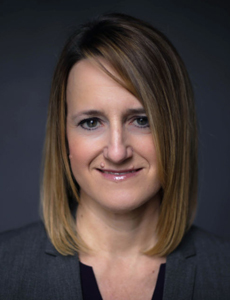COVID-19’s Top Legal and Regulatory Pitfalls for Workers’ Comp — What to Watch Out For

The state-level workers’ comp system is difficult enough to navigate in an average world. But combined with ever-changing federal mandates related to Coronavirus, it adds a complexity to the pandemic environment that will impact employers for a long time to come, as they seek to not only protect employees, but also mitigate their legal and compliance risks.
The latest developments on these issues were presented in a recent webinar, Post-COVID-19: Workers’ Compensation Return to Work, hosted by Jennifer Santoro and Zachary Pratt, both partners with law firm Goldberg Segalla.
One concern that’s been top of mind for workers’ comp professionals is the same issue facing the insurance industry more broadly — the desire the bend or alter the longstanding covenant that says coverage does not exist beyond the bounds of policy language.
The recent explosion of new and re-written presumption laws is just one way that trend is manifesting. More than a dozen states have already passed legislation aimed at ensuring that COVID-19 related claims will be covered for certain employee groups, despite the impossibility of proving whether a worker was infected on or off the job.
Some lawmakers are pushing to make these laws impossibly broad, such as one failed Illinois proposal that would have created a presumption of compensability for all employees classified as essential, regardless of any other risk factors.
Kentucky has extended its covered essential worker presumption to employees in grocery store settings, while Minnesota covers those providing child care for health care workers and first responders, and California’s Executive Order N-62-20 creates a (rebuttable) presumption of compensability for all essential employees working outside the home.
“There’s a lot of sympathy here. People are scared. So there may be that willingness to lean, to bend rules, to make things compensable. We need to be thinking about that as we’re preparing our defenses, doing our investigation and preparing our case.” — Jennifer Santoro, partner, Goldberg Segalla
At least 10 more states have new presumption laws already in the works. Employers with multi-state operations will bear the intense challenge of keeping up to date with these rules as they evolve, and ensuring they remain in compliance.
Employers will face situations where a type of worker in one state is covered, but not in the next state. There will be questions as to when these rules take effect – some of the rules take effect when the order or statutory amendment is put into place. Others are retroactive. Some go forward 60 days. Yet others go into effect in conjunction with governors’ orders.
“I can’t make any sweeping statement as to what [these] presumptions say, you’re going to have to look at each individual rule order, statutory change … because they’re all going to be very, very different in terms of their minutiae and how it applies to your particular situation,” said Santoro.
While a presumption of compatibility “doesn’t mean we can’t fight those cases, defend those cases or that they’re all compensable,” she added, these laws do make the burden of proof much easier for employees in protected categories.
Unfortunately, the cases that do get contested will be emotionally fraught in a way that will keep employers on defense, wanting to defend against non-compensable claims, but also not wanting to create a negative public perception.
“You’re going to see a lot of states saying things like, ‘We want to do this because we want to keep those people encouraged to go to work, we want to make sure that they feel like they’re safe.’ Those are the underlying themes that are going to justify those rules and regulations,” Santoro said.
But lawmakers and the public aren’t necessarily seeing the other side of the coin – the cost that employers will bear as a consequence of the burden shifting to employer workers’ compensation programs.
The bottom line for employers, the attorneys said, will be to have a process in place to stay on top of the changing landscape of rules in an up-to-the-minute fashion. Organizations such as NCCI are providing useful resources to help employers keep up.
Doing ‘The Right Thing?’
Even in states with no new or amended presumption laws, employers may be expected to pay for claims that they normally would deny.
Explained Santoro, “In Florida, for instance, they haven’t really changed their statute in any significant respect. But they did put out a memo to insurance companies … to say, hey, there are ways in which a [COVID-19] case could be compensable in Florida. Make sure that you apply it in a nondiscriminatory manner.’
“And I think that that’s indicative of how courts are going to look at these things and how we … need to be thinking about handling our cases going forward. There’s a lot of sympathy here. People are scared. So there may be that willingness to lean, to bend rules, to make things compensable. We need to be thinking about that as we’re preparing our defenses, doing our investigation and preparing our case.”
Insurers in New York have received similar guidance, said Pratt. A recent notice from the chair of the state workers’ comp board said, in effect, “Hey, we’re counting on employers, risk managers, claims administrators to ‘do the right thing’ here,” said Pratt.
The chair also advised workers’ comp payers — in no uncertain terms — that the New York State Workers’ Compensation Board believes that COVID-19 claims are accidental injury claims, despite the fact that they deal with a communicable disease.
“They are not going to be evaluated as occupational disease claims,” said Pratt. “For anyone who’s familiar with the New York expedited claims process, that means that a COVID-19 case goes on the rocket docket and will need to be adjudicated and administered in that expedited timeframe.”
Back to Work Safely … and in Compliance
As businesses reopen physical facilities and employees return to work, keeping workers safe will be paramount. Employers in every sector will have their hands full making sure that employees are protected to the full degree required by a dizzying array of guidelines coming from OSHA, the DCD, the EEOC, and state and local authorities.
OSHA’s most recent guidance directs employers to develop an infectious disease plan and implement workplace hazard controls. That means having basic infection prevention measures in place, said Pratt, and developing and implementing plans to identify and isolate sick individuals.
“What OSHA means by basic infection prevention and workplace hazard control isn’t rocket science,” he said. “It’s really kind of the high points that we’ve been hearing from the CDC for quite some time now. It involves encouraging everyone in the workplace to maintain appropriate hygiene. That’s proper hand-washing, proper distancing, sanitizing any shared equipment.
“Part and parcel of that is we need to make sure that we are encouraging everybody to demonstrate appropriate respiratory etiquette. How do we cover a sneeze? How do we cover a cough? I know it’s going to feel like we’re back in preschool, but we’re going to have to have supervisors go through these etiquette steps with all of our employees.”
Some employers may balk at the level of burden these requirements pose. Unfortunately, those that don’t take these steps could find themselves in the crosshairs of regulators if employees do contract the virus after they return to work.
Being in compliance, and being able to demonstrate compliance “is going to be the best way for us to prove that whatever risk an employee faces at work is no greater than the risk that he or she faces in general,” said Pratt. “That’s going to be the key to defeating many of these claims on the issue of causation, if it gets that point.”
That means employers are going to have to rethink a lot of processes and procedures related to their physical environments, now and for the foreseeable future – until there’s no longer need to maintain a certain level of physical separation between employees.
That separation will likely continue to include some level of remote work and other measures for many employers, in order remain compliant with OSHA regulations. Long-term plans for creative scheduling, staggered shifts, reduced crews and managed traffic patterns will need to be considered for many operations.
To remain compliant, “these are all types of things that are going to have to be considered and thought about in depth,” said Pratt. “[Employers are] going to have to provide some planning and implementation to try some of these things out in order to show that we’re doing everything we can to maintain appropriately safe work environments and maintain compliance with these overarching guidelines.
“It’s really hard to say, well, do this, do that and do that. And you’re going to be fine,” said Santoro. “I don’t think there is a cookie-cutter answer as to how we’re going to go about this.”
Every Positive Measure You Take Makes Claims Easier to Defend
Everything that employers do — or don’t do — right now can have an impact on their ability to successfully fight invalid claims.
Once you’ve got a lawyer on the phone about your COVID-19 claim, said Santoro, that lawyer is going to be asking, “What can I show the court that you did to protect this employee?”
“On the lawyer side, we want to see all of that information,” said Santoro. “Can you document that you changed your physical workspace? Can you document that you taught your employees how to work in this new work environment? What did you teach them? When did you teach them? Did you teach them how to use the PPE? Did you remind them how to sneeze like that? It’s kind of silly, maybe, but it’s the reality that we live in now.
“We’re going to have to go back to some basics in some respects in order to stave off these cases and defend these cases.” &












